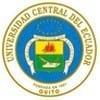Quantification of the Campylobacter contamination on broiler carcasses during the slaughter of Campylobacter positive flocks in semi-industrialized slaughterhouses
Abstract
Campylobacter contamination of broiler carcasses has been little studied in semi-industrialized slaughterhouses in developing countries, where several steps are carried out manually or with limited technology. In this study, we performed quantification of the Campylobacter contamination on carcasses at four steps in the slaughter process in three Ecuadorian slaughterhouses. Therefore, 15 Campylobacter positive batches were sampled in three commercial slaughterhouses. For every batch, caecal content and five samples of breast skin were taken and examined for Campylobacter counts at the following steps: after plucking, after evisceration, after final washing and after water chilling. Slaughterhouse C was the only slaughterhouse in which Campylobacter counts increased significantly after evisceration. No significant differences were found between counts after evisceration and after final washing (P > 0.05). In all slaughterhouses, a significant reduction of Campylobacter counts (0.11 to 2.55 log10 CFU/g) was found after the chilling step. The presence of chlorine in the chilling water was associated with the highest reduction in Campylobacter counts on the carcasses. A high variability of Campylobacter counts was found within and between batches slaughtered in the same slaughterhouse. Campylobacter counts in caecal content samples were not correlated with counts on carcasses after plucking nor after evisceration.
Abstract published in International Journal of Food Microbiology, Volume 269, 23 March 2018, Pages 75-79. https://doi.org/10.1016/j.ijfoodmicro.2018.01.021.


















